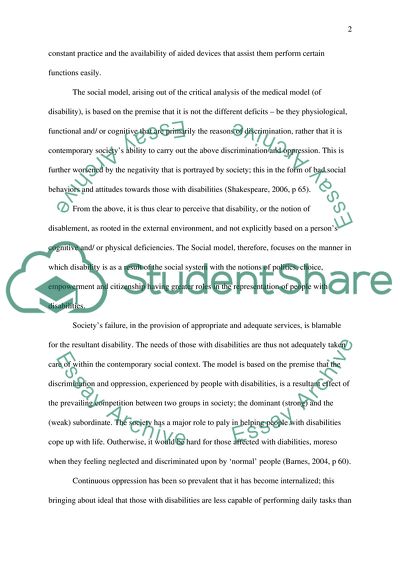Cite this document
(Disability: Policies and Current Legislation Essay, n.d.)
Disability: Policies and Current Legislation Essay. Retrieved from https://studentshare.org/law/1777288-examine-the-extent-to-which-current-legislation-and-policies-on-disability-support-the-social-model-and-discuss-where-there-are-limitations
Disability: Policies and Current Legislation Essay. Retrieved from https://studentshare.org/law/1777288-examine-the-extent-to-which-current-legislation-and-policies-on-disability-support-the-social-model-and-discuss-where-there-are-limitations
(Disability: Policies and Current Legislation Essay)
Disability: Policies and Current Legislation Essay. https://studentshare.org/law/1777288-examine-the-extent-to-which-current-legislation-and-policies-on-disability-support-the-social-model-and-discuss-where-there-are-limitations.
Disability: Policies and Current Legislation Essay. https://studentshare.org/law/1777288-examine-the-extent-to-which-current-legislation-and-policies-on-disability-support-the-social-model-and-discuss-where-there-are-limitations.
“Disability: Policies and Current Legislation Essay”, n.d. https://studentshare.org/law/1777288-examine-the-extent-to-which-current-legislation-and-policies-on-disability-support-the-social-model-and-discuss-where-there-are-limitations.


